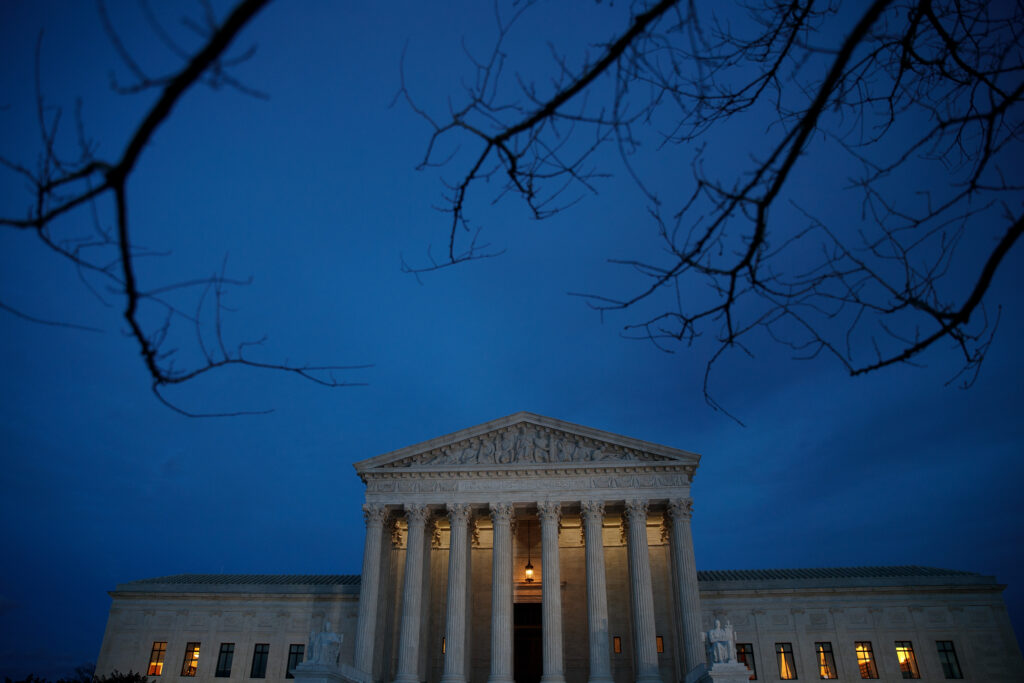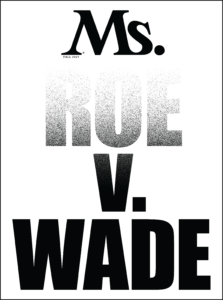With an unsigned, one-paragraph ruling, the Supreme Court permitted the evisceration of Roe without any constitutional analysis. The Supreme Court’s shadow docket can no longer be denied.

Editor’s note: The Senate Judiciary Committee on Wednesday held a hearing on Texas’s unconstitutional abortion ban and the role of the shadow docket.
Shortly before midnight on September 1, the Supreme Court issued an unsigned, one-paragraph opinion letting stand the Texas abortion ban S.B. 8—otherwise known as the “Texas Heartbeat Act,” which essentially guts access to abortion in Texas while technically preserving Roe v. Wade and Planned Parenthood v. Casey. In other words, the Supreme Court permitted the evisceration of Roe without any constitutional analysis.
With this ruling, the Supreme Court’s so-called shadow docket can no longer be denied, nor can its increasingly unusual manner of judicial review be ignored. Both raise concerns about the rule of law and independent judicial review, not to mention the legitimacy and credibility of the U.S. Supreme Court.
In recent years, the Court has increasingly issued rulings addressing urgent civil liberties concerns without providing the American public with the benefit of a signed, written opinion. In his 2019 essay for the Harvard Law Review, “The Solicitor General and the Shadow Docket,” Stephen I. Vladeck, a professor at the University of Texas School of Law, called attention to the Supreme Court’s deepening engagement with this shadow docket. Vladeck tracked what he ominously described as a “significant volume of orders and summary decisions that the Court issues without full briefing and oral argument.”
Leading us to this moment are the corruption of the judicial review process as well as the underlying crisis of U.S. democracy, including myriad successful voter suppression efforts in Texas and other states that create inordinate barriers to fair governance and elections.
In Texas, where women are more than 50 percent of the population, men make up nearly 80 percent of the state legislature. Moreover, while white Texans make up just over 40 percent of the residents of the state, they hold two-thirds of the seats in the legislature.
The Texas anti-abortion law—and the Supreme Court’s stunning inaction when applicants challenged the law—brings this crisis of democracy into glaring relief. In Whole Woman’s Health v. Jackson, challengers appealed to the Supreme Court to grant an injunction to block the law from going into effect. In their unsigned order, five conservative justices denied the request, even while acknowledging that the “applicants … have raised serious questions regarding the constitutionality of the Texas law at issue.”

This article originally appears in the Fall 2021 issue of Ms. Become a member today to read more reporting like this in print and through our app.
Rather than addressing those serious issues, which substantively undermine abortion rights in Texas, the majority obfuscated, claiming “complex and novel antecedent procedural questions” barred the Court’s intervention—meaning the applicants had not met a standard for its review. Further closing the door on the applicants’ relief, the 5-4 majority postulated that “it is unclear whether the named defendants in this lawsuit can or will seek to enforce the Texas law against the applicants in a manner that might permit our intervention.”
Women’s rights advocates are right to be outraged. Reproductive rights—once perceived to be a hallmark of late 20th-century American democracy—may soon give way to conservative states enacting unconstitutional anti-abortion provisions with procedural barriers so thickly and cleverly intertwined that the ability to challenge them may be unattainable, including at the Supreme Court. S.B. 8 is a model for successfully gerrymandering and gutting abortion rights.
The Texas law bans abortions after six weeks of pregnancy—a time frame in which most people will not yet be aware of their pregnancies—and empowers citizens to enforce its broad provisions against providers, insurance companies and anyone found to “aid or abet” an abortion.
Such an extreme law directly contravenes the spirit of Roe and the legal standards established in Planned Parenthood v. Casey, which affirmed “the right of the woman to choose to have an abortion before viability and to obtain it without undue interference from the state.”
Unfortunately, anti-abortion legislation like this Texas law may become less and less surprising given what ostensibly appears to be a green light from the conservative majority that now controls the Supreme Court. The result of the Court’s shadow docket opinion is not just an end, essentially, to the legal right to an abortion in Texas—it sets in motion a workable blueprint for all other conservative state legislatures bent on stripping away abortion rights.
Up next:





